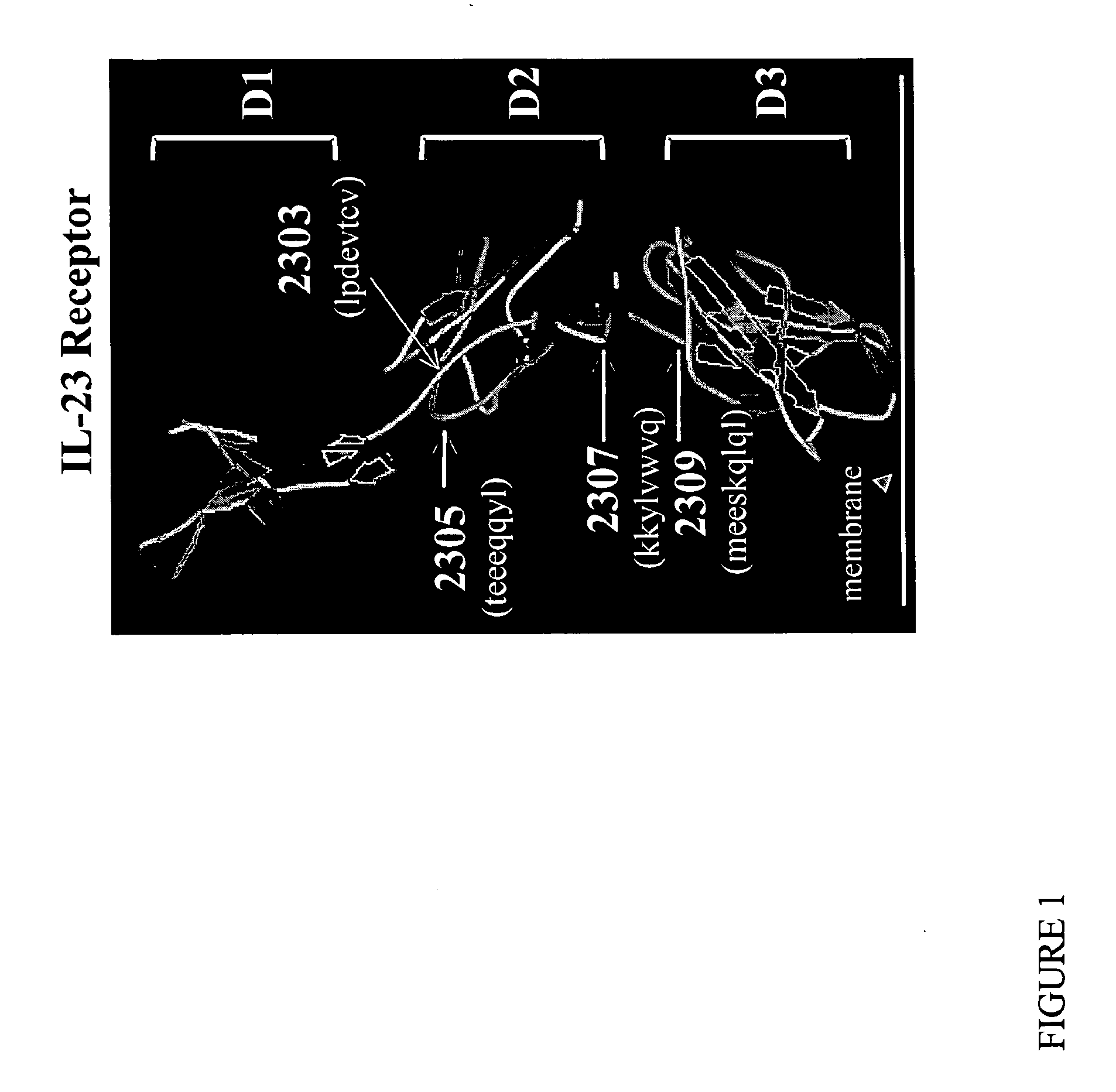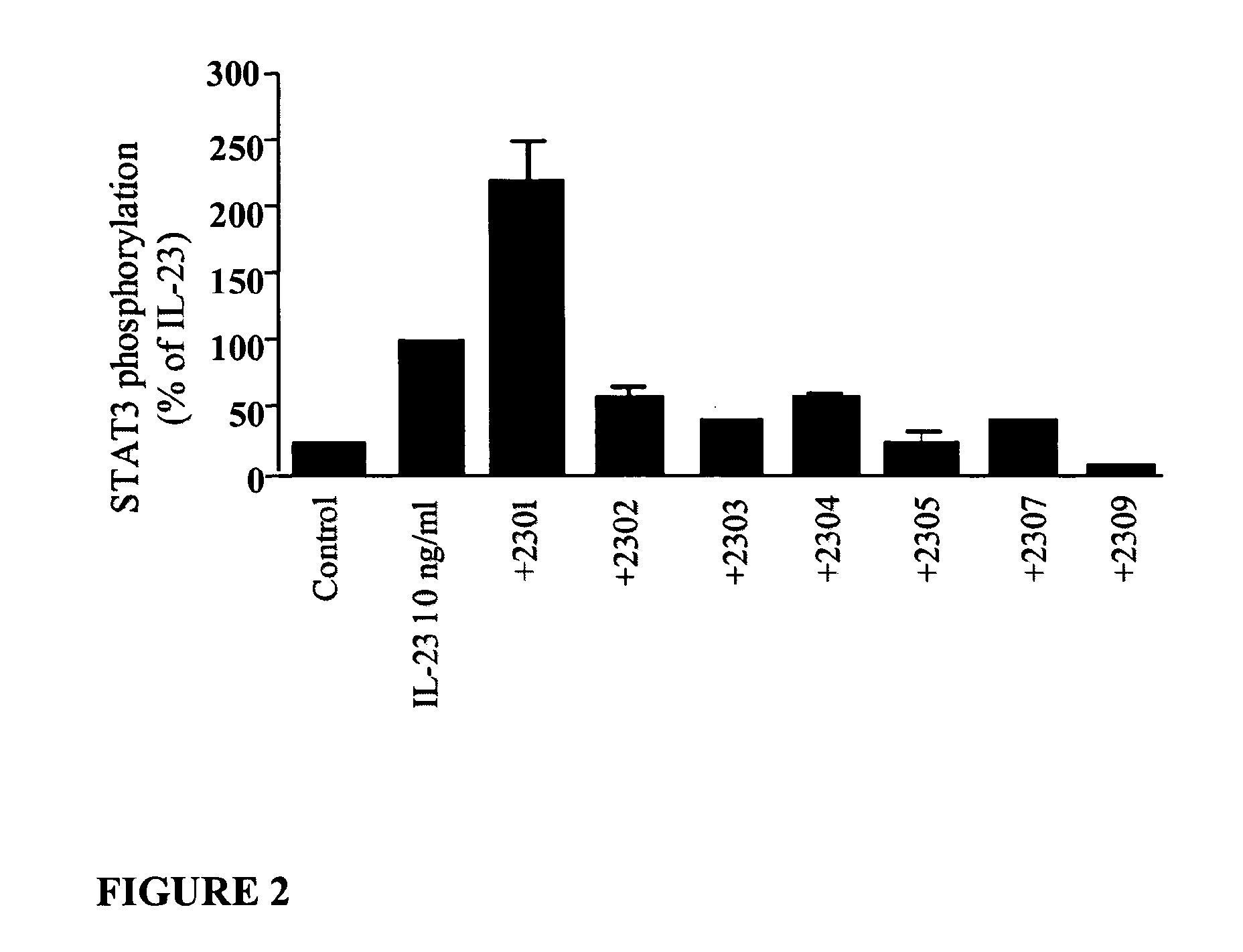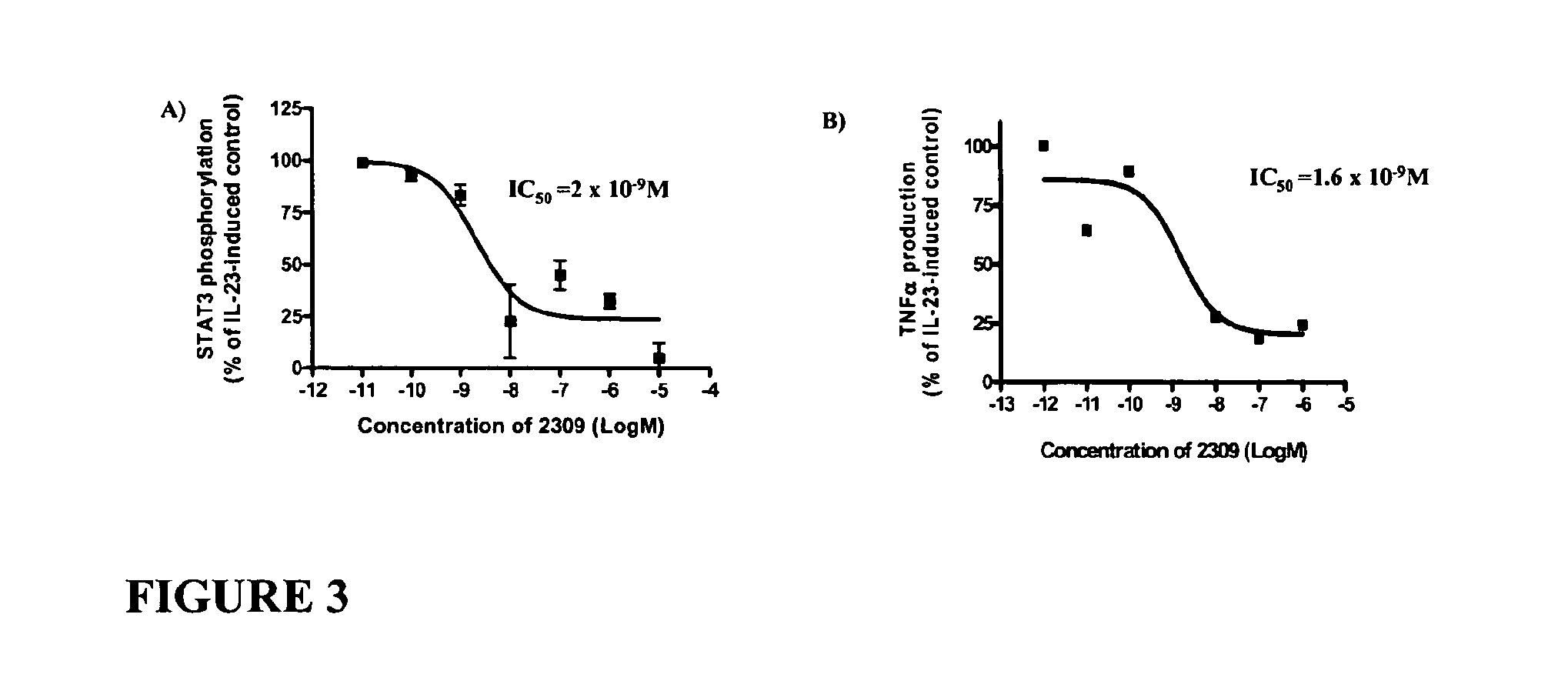Il-23 receptor antagonists and uses thereof
- Summary
- Abstract
- Description
- Claims
- Application Information
AI Technical Summary
Benefits of technology
Problems solved by technology
Method used
Image
Examples
example 1
Identification of IL-23R Antagonists and Agonists
[0263]The domain similarities (IgG-like domains) were determined with ProDom (Boeckmann et al., Nucleic Ac Res 31:365-370 (2003)), PROSITE (Rost, Enzymol 266:525-539 (1996)) and Predict Protein (Rost, Enzymol 266:525-539 (1996)) to confirm the position of the different regions of the IL-23 receptor and the secondary structure distribution. Hydrophobic and flexibility profiles were then examined with the program ProtScale (Kyte et al., J Mol Biol 157:105-132, 1982). As described above, IL-23R and IL-12R are structurally similar as they share common ligand and receptor subunits. Maintenance of integrity of IL-12R activation is desirable to preserve immunocompetence (Kenakin, Mol. Intervention. 4:222-229 (2004); Langrish et al., Immunol Rev 202:96-105 (2004)). However, IL-12Rβ2 and IL-23R only exhibit 24% similarities. Hence, based on crystallography, molecular modeling, and hydropathy profile, extracellular regions specific to IL-23R (i...
example 2
Characterization of IL-23R Antagonists
[0264]D-peptides 2303, 2305, 2307 and 2309 (1 μM) inhibit IL-23-induced STAT3 phosphorylation in phorbol 12-myristate 13-acetate (PMA)-activated human monocytes (HL-60) (FIG. 2). Because of reproducibility of results, concentration-response to 2309 was studied further on the same assay and revealed Emax≈85% and IC50=2 nM (FIG. 3A). This efficacy was further corroborated using a separate outcome parameter, specifically tumor necrosis factor (TNF) formation (measured by enzyme-linked immunosorbent assay (ELISA); FIG. 3B), which yielded equivalent Emax≈80% and IC50=1.6 nM.
[0265]In splenocytes and TH17 cells, respectively, peptide APG-2305 (1 μM) inhibited 75% and 100% of IL-23-induced STAT3 phosphorylation while peptide APG-2309 (1 μM) inhibited 50% and 75% of IL-23-induced-STAT3 phosphorylation (25 ng / ml)(FIGS. 4, 6, and 7). Peptides APG-2305 and APG-2309 showed potencies (IC50s) of 1 nM and 2 nM (FIG. 5). As noted above, peptide 2305 is derived f...
example 3
Derivatives of APG-2305 and APG-2309
[0275]The effect of peptide APG-2305 and APG-2309 derivatives on IL-23-induced STAT3 phosphorylation was determined using CD-1 mice freshly isolated splenocytes and the Alpha Screen p-STAT3 assay (see above materials and methods) (FIGS. 6 and 7). Both APG-2305 and APG-2309 peptides, and some of the derivatives, showed efficacy in inhibiting IL-23-induced STAT 3 phosphorylation in mice splenocytes and in pro-inflammatory TH17 cells where IL-23 has been shown to play major proliferative and anti-apoptotic roles. As described herein, based on the efficacy of derivatives, we have identified regions in APG-2305 and APG-2309 peptides that are important for their ability to affect IL-23R activity.
PUM
| Property | Measurement | Unit |
|---|---|---|
| Composition | aaaaa | aaaaa |
| Acidity | aaaaa | aaaaa |
| Hydrophobicity | aaaaa | aaaaa |
Abstract
Description
Claims
Application Information
 Login to View More
Login to View More - R&D
- Intellectual Property
- Life Sciences
- Materials
- Tech Scout
- Unparalleled Data Quality
- Higher Quality Content
- 60% Fewer Hallucinations
Browse by: Latest US Patents, China's latest patents, Technical Efficacy Thesaurus, Application Domain, Technology Topic, Popular Technical Reports.
© 2025 PatSnap. All rights reserved.Legal|Privacy policy|Modern Slavery Act Transparency Statement|Sitemap|About US| Contact US: help@patsnap.com



